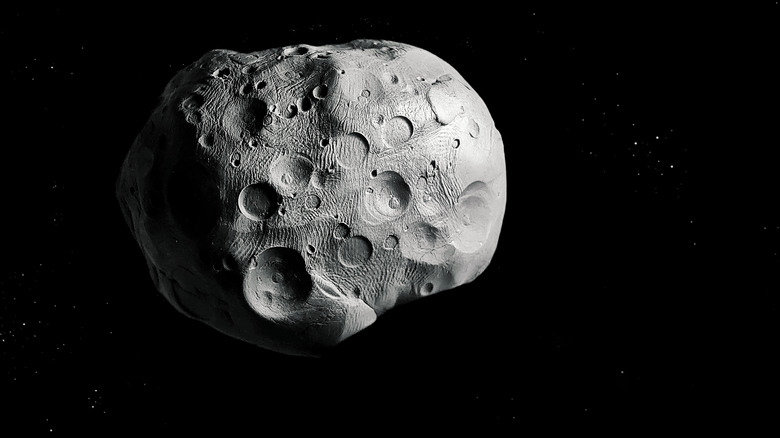Astronomers Spotted This Asteroid Two Hours Before It Impacted Earth
While it's big asteroids with world-ending potential that tend to be the focus of fiction, like in the popular movie Don't Look Up, a much more common occurrence is that our planet is impacted by far small asteroids. These smaller examples usually burn up in the atmosphere and so do very little damage, like one which impacted the atmosphere on March 11, 2022. But this small asteroid was noteworthy for one reason: its impact had been predicted by astronomers.
It's very rare for a small asteroid impact to be predicted, but that's what happened with asteroid 2022 EB5. It is just the fifth ever asteroid which has been observed before impacting the atmosphere (via JPL). This one was spotted a mere two hours before impact by K. Sarneczky at the Piszkéstető Observatory in northern Hungary, who reported it to an international directory called the Minor Planet Center. Then other astronomers like those at NASA were able to observe and confirm the impact.
"Tiny asteroids like 2022 EB5 are numerous, and they impact into the atmosphere quite frequently – roughly every 10 months or so," said Paul Chodas, the director of Center for Near Earth Object Studies at NASA's Jet Propulsion Laboratory. "But very few of these asteroids have actually been detected in space and observed extensively prior to impact, basically because they are very faint until the last few hours, and a survey telescope has to observe just the right spot of sky at the right time for one to be detected."
NASA's asteroid-spotting system
NASA has a system called Scout which is used to assess asteroids which come close to our planet, otherwise known as near-Earth objects. Scout confirmed the incoming 2022 EB5 asteroid and then alerted the NASA office responsible for what to do if an asteroid hits, known as the Planetary Defense Coordination Office.
"Scout had only 14 observations over 40 minutes from one observatory to work with when it first identified the object as an impactor," said Davide Farnocchia, a navigation engineer at JPL who developed Scout (via JPL). "We were able to determine the possible impact locations, which initially extended from western Greenland to off the coast of Norway. As more observatories tracked the asteroid, our calculations of its trajectory and impact location became more precise."
In the end, the asteroid hit the atmosphere at 5:23 p.m. ET on March 11, just as Scout predicted, and it impacted around 300 miles off the coast of Greenland. The 6.5 foot diameter asteroid burned up in the atmosphere, and none of the matter is thought to have made it to the ground. If an asteroid is larger than this, and potentially dangerous to life, though, it is generally easier to spot and would likely be discovered while it was still further away. NASA details how it spots and tracks larger asteroids on a regular basis on the JPL's Asteroid Watch website.
